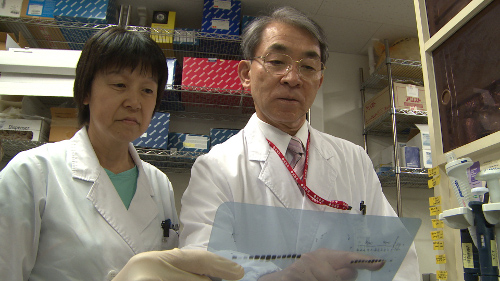To mark week three of our decade of discovery celebrations, we’re focusing our efforts on childhood cancer research. Through the Help Fight Childhood Cancer project, World Community Grid volunteers powered the screening of over three million drug candidates for neuroblastoma – a common and dangerous form of childhood cancer. Through this screening, researchers identified seven drug candidates that showed great potential for drug development – a breakthrough that could save many young lives.

Neuroblastoma is a form of childhood cancer that affects nerve tissues, often starting in the spine, neck, chest, abdomen or pelvis. As with most cancers, the cause is unknown and it affects approximately one in 8,000 children in the United States and Japan. While 80% of children diagnosed with cancer are cured, the prognosis is not nearly as good for those with neuroblastoma - only 30% of high-risk cases are cured.
The urgent need for new treatments to fight this dangerous disease inspired researchers at the Chiba Cancer Center in Japan to partner with World Community Grid to create the Help Fight Childhood Cancer project. Launched in 2009, the project aims to develop new medicines to fight neuroblastoma.
The researchers’ strategy was to identify small molecules that would activate a natural self-destruct mechanism in diseased cells - a defense that is suppressed by the cancer. Over the course of two years, World Community Grid volunteers helped the researchers screen three million molecules - a search that would have taken more than 55,000 years on a single computer. Following this testing, in February this year the researchers announced the discovery of seven promising molecules that proved effective at activating the self-destruct function and destroying neuroblastoma cancer tumors when tested on mice, without any apparent side effects on healthy tissue.
This was a significant breakthrough - particularly because over the course of the last 20 years, very little progress has been made in improving the cure rate for this deadly disease. What makes this discovery even more important is the fact that it could aid the research of many adult cancers including breast, lung, pancreatic, prostate and colon cancers.
Building on this success, in July lead researcher Dr. Nakagawara announced his plans to develop a second phase of the project on World Community Grid to cover multiple additional childhood cancers.
Speaking to the volunteers who made this crucial project possible, Dr. Nakagawara commented: “We are so grateful for the support of World Community Grid volunteers and the role you've played in powering our phase one research.”
If you’d like to help advance cancer research, please share this story with your friends and colleagues, and encourage them to support another fantastic cancer research project currently running on World Community Grid - Mapping Cancer Markers.
Here’s to another decade of discovery.
To contribute to Mapping Cancer Markers go to your My Projects page and make sure the box is checked. Mapping Cancer Markers is dedicated to improving cancer treatment by identifying cancer biomarkers, which could help doctors detect cancer earlier and customize treatment.
Please visit the following pages to learn more:
Related Articles
- New hope in the fight against childhood cancer
- Breakthrough in the fight against childhood cancer
- Decades of Discovery: Here’s to the next 10 years of humanitarian science
- The Road Ahead for Help Fight Childhood Cancer